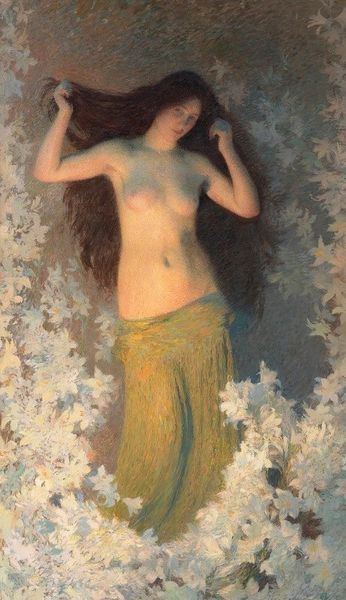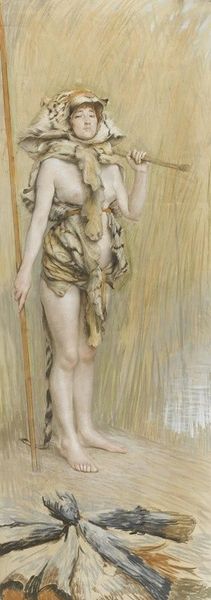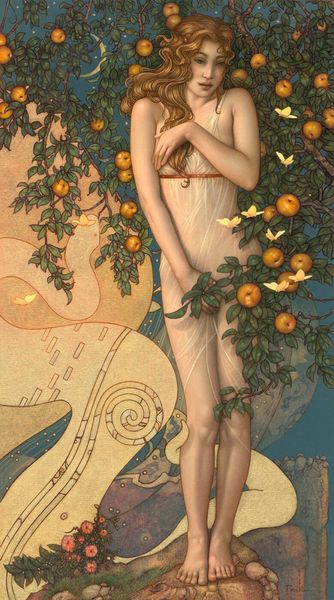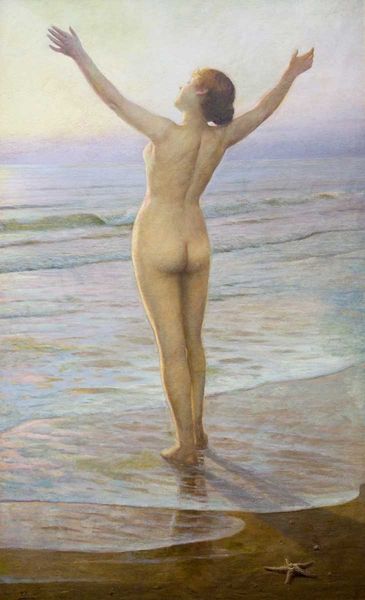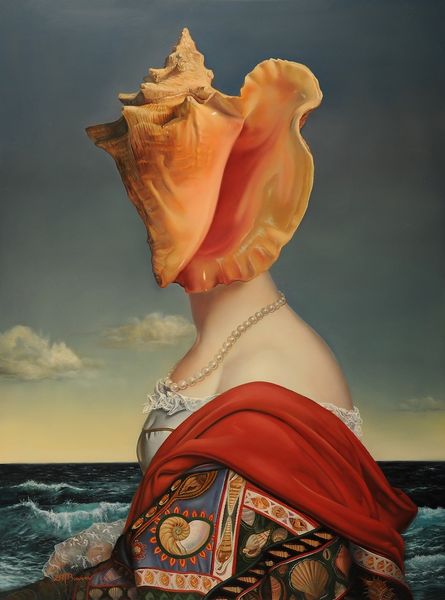
Copyright: Public Domain: Artvee
Curator: Evelyn De Morgan created this piece titled "Clytie" between 1886 and 1887. It's an oil painting that vividly interprets a figure from Greek mythology. Editor: There's an immediate melancholy radiating from this painting. The figure seems burdened, her posture defeated, and yet the sunflowers surrounding her evoke a certain tenacity. Curator: The story of Clytie is one of unrequited love. She was a water nymph who loved Apollo, the sun god. When he abandoned her, she wasted away, eventually transforming into a sunflower, forever facing the sun in eternal longing. Editor: That narrative beautifully explains the visual symbolism! The sunflowers aren't just decorative; they're essential to understanding her sorrowful transformation, echoing her constant, unwavering gaze toward Apollo. And the pose...she's shielding herself, almost as if hiding from his very light. Curator: Indeed. De Morgan was deeply immersed in Pre-Raphaelite aesthetics and often incorporated symbolism to convey complex narratives. Consider the contrast: the vibrancy of the sunflowers against the desaturated tones of her skin and the somber background. This stylistic choice highlights Clytie’s isolation. She used this piece to consider ideas from Ovid’s Metamorphoses which gained interest at the time. Editor: You can really see how De Morgan uses the Pre-Raphaelite ideal to enhance her emotional impact, can't you? But there's more than that: There is definitely a comment on societal pressures against women with the lack of their personal agency at the time. Even transformed, Clytie can do nothing but eternally pursue an unavailable object of desire. It’s so heartbreaking. Curator: A sentiment perfectly captured in this oil painting. Its power resides in its layered symbolism and depiction of female suffering within mythology. The painting remains a reminder of the limitations placed upon women in both mythological and historical contexts. Editor: And for viewers today, it encourages reflecting about endurance, sorrow, and perhaps the transformative power of grief itself.
Comments
No comments
Be the first to comment and join the conversation on the ultimate creative platform.
